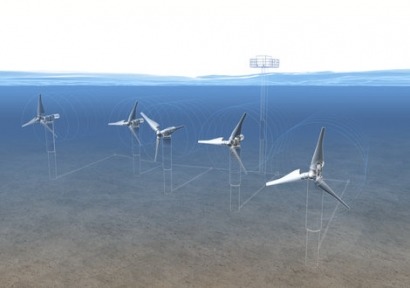
The Crown Estate, manager of the UK seabed, has announced that it has agreed seabed rights for new marine energy demonstration zones and project sites around the UK coast. The rights include six new wave and tidal current demonstration zones and five tidal current project sites, each with the potential to deliver a project of between 10MW and 30MW capacity.
MCT has secured AfLs for three new commercial-scale tidal projects at Mull of Galloway on the west coast of Scotland, Portland Bill on the south coast of England and Strangford Lough in Northern Ireland. The sites were identified following a UK-wide assessment of locations potentially suitable for MCT’s next generation SeaGen technology.
“By providing these additional seabed rights we are pleased to be enabling further technology development and commercialisation, which will be critical if the UK is to unlock its significant natural resources for wave and tidal current energy” said Rob Hastings, director of Energy and Infrastructure at The Crown Estate.
Sven Stoye, chief executive officer of MCT, added that the strategic decision to push forward with developing commercial-scale projects demonstrates Siemens commitment to the tidal sector.
Each project will be up to 30MW capacity with the target date for installation being 2020-2021. However, this depends on the projects’ economic viability following detailed site assessment and all the required consents. Securing the AfLs enables MCT to go ahead with investigations on the sites as well as commencing the consenting and consultation process. This will be include full Environmental Impact Assessments (EIA) on each project. The company is already in discussion with a number of prospective partners to co-develop the projects.
The global potential for power generated by tidal power plants has been estimated at 800 TWh annually. This is equivalent to 3-4 percent of global power consumption. Coastal regions with strong tidal currents like those in the UK, Canada, France and East Asia offer major potential for the utilisation of this technology.
For additional information:

